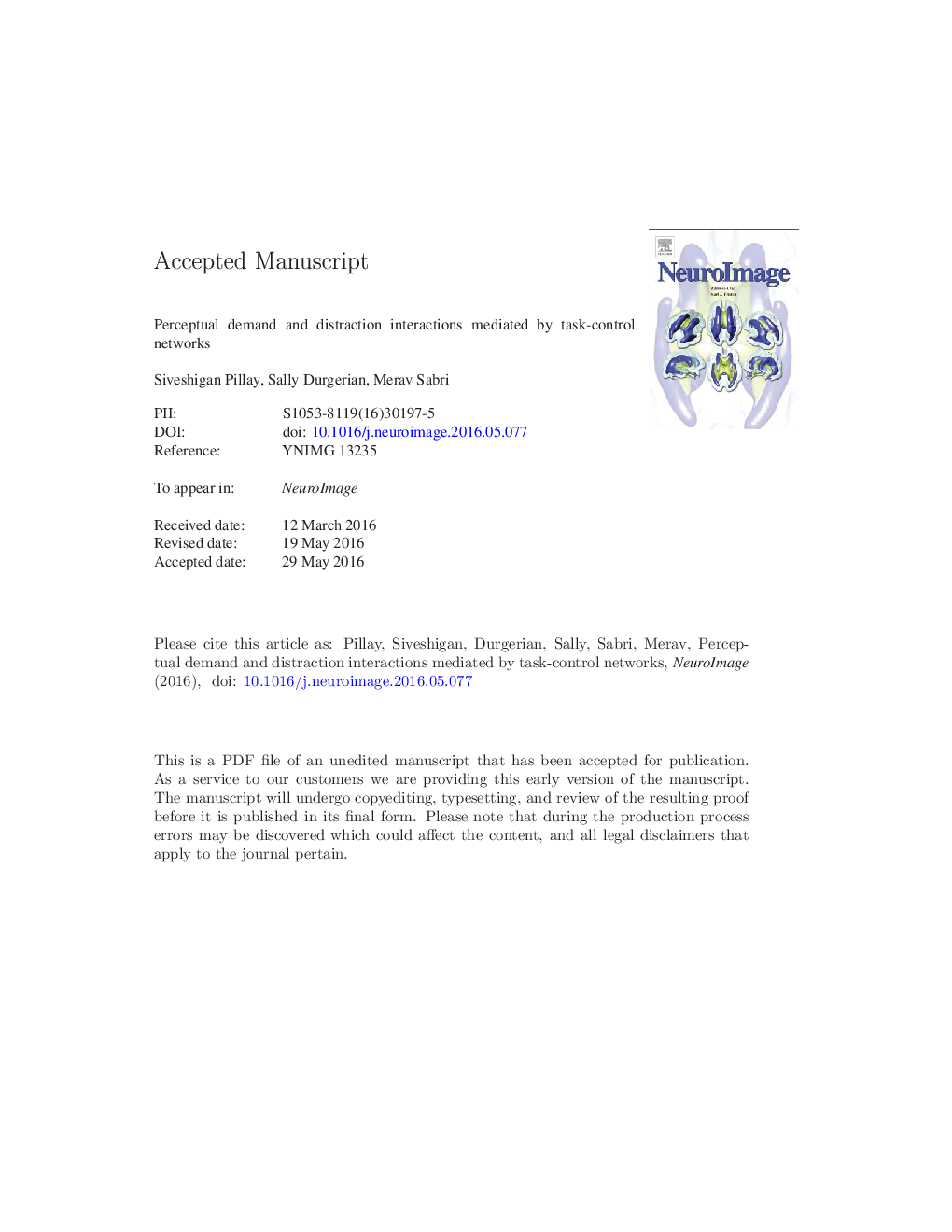| Article ID | Journal | Published Year | Pages | File Type |
|---|---|---|---|---|
| 6023507 | NeuroImage | 2016 | 27 Pages |
Abstract
Modulation of selective attention appears to be under the guidance of a cluster of distinct task-control networks, the frontroparietal (FPN) and cingulo-opercular (CON). Yet, their role in mediating the relationship between task perceptual load and presence/absence of distraction in the auditory modality is unclear. Here, we examined this interaction using functional magnetic resonance imaging (fMRI) and an auditory signal detection task. The auditory stimulus signal-to-noise ratio (SNR) was parametrically manipulated, by varying the amplitude of the Tone while holding the Noise constant, to create four perceptual load conditions presented in combination with or without acoustic distraction. Regions of the FPN (e.g., dorsolateral prefrontal cortex, inferior parietal lobule) and CON (e.g., dorsal anterior cingulate cortex/medial superior frontal cortex, anterior prefrontal cortex, anterior insula/frontal operculum) were modulated by perceptual load and distraction, such that lower loads induced a pattern of increased activity when there was no distraction. On the other hand, a trend of augmented activity was found in higher loads during distraction. These findings suggest a role for the FPN and CON in mediating the allocation of attentional resources to competing auditory information under varying degrees of perceptual demand.
Related Topics
Life Sciences
Neuroscience
Cognitive Neuroscience
Authors
Siveshigan Pillay, Sally Durgerian, Merav Sabri,
